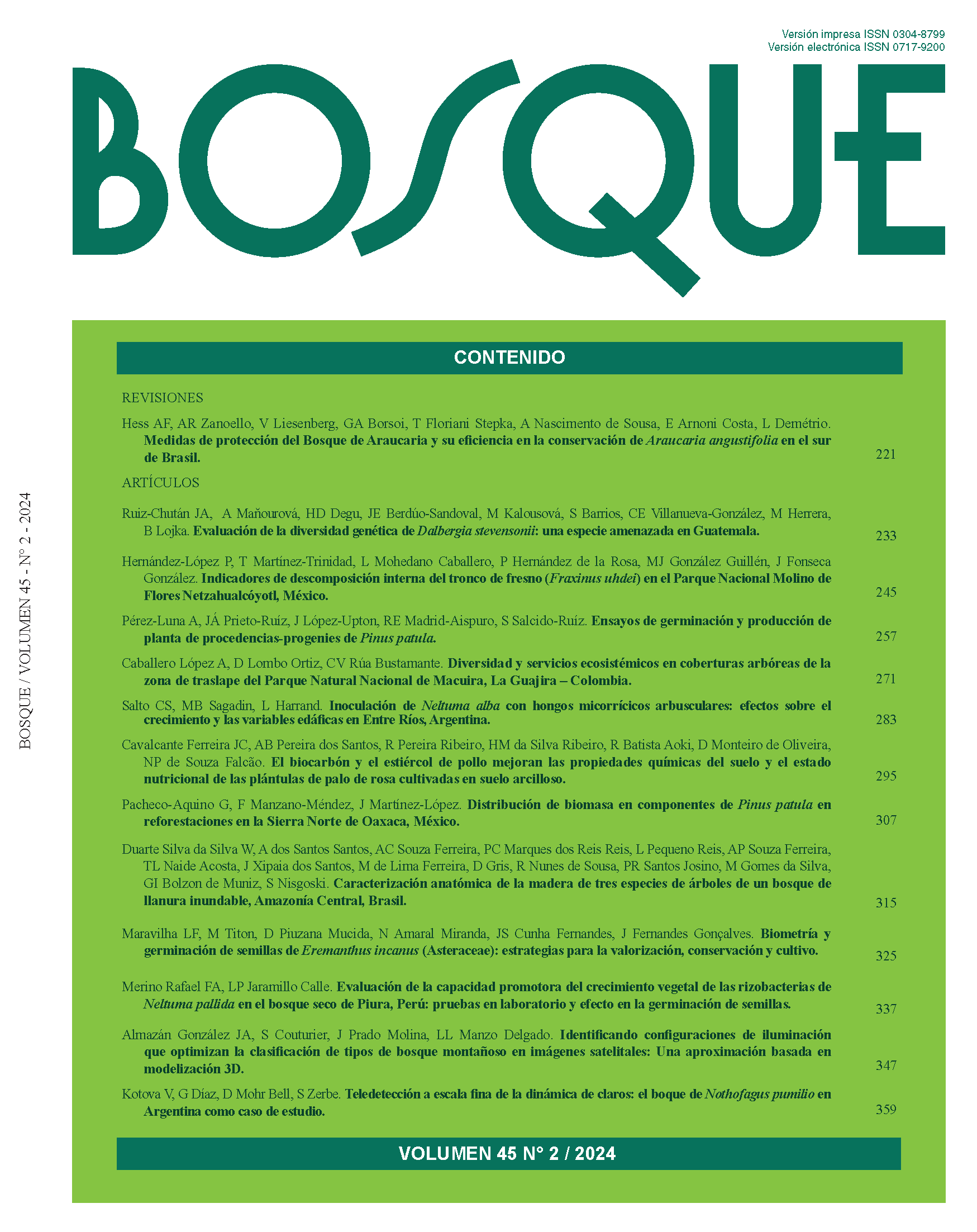Main Article Content
Oct 13, 2024
Abstract
Sustainable forest management is of crucial importance due to the manifold ecosystem services forests provide for society. The forests of South America are characterized, on the one hand, by a high degree of naturalness and, on the other hand, by signs of degradation by grazing, unsustainable timber use, the invasion of non-native tree species and anthropogenic fire. Accordingly, modern inventory and management tools are necessary. We analysed Landsat time series from 1998 to 2020, additionally accompanied by images from 1985, 1986, 1987 and 1992 in order to detect the fine-scale gap dynamics of Nothofagus pumilio forests in central Patagonia, Argentina. The dense time series is extracted from annual image composites obtained with an algorithm based on the Best Available Pixel (BAP) approach. A time series is developed for each study plot, building it with the spectral values of the pixel on the centre of the plots. The method proved to be useful in identifying the time and intensity of changes in tree structure at pixel scale. Accordingly, it can be part of a continuous forest monitoring and supports forest management by providing a cheap proxy indicator of important natural phenomena occurring in remote forest sites. We finally point to the importance of combining remote sensing and terrestrial approaches for modernize forest inventories.
Downloads

This work is licensed under a Creative Commons Attribution-NonCommercial 4.0 International License.


